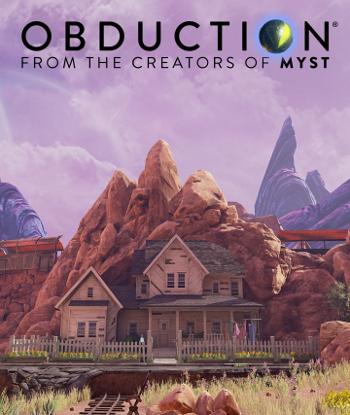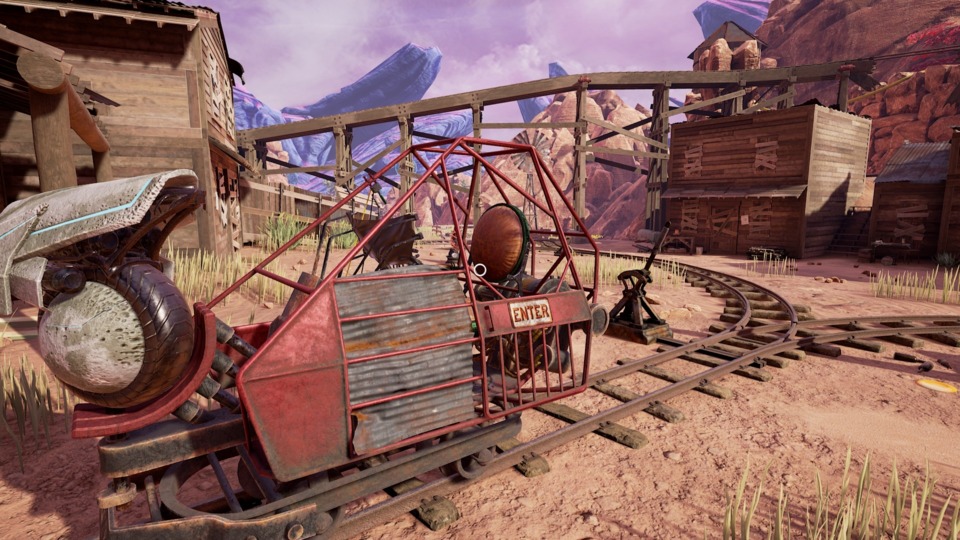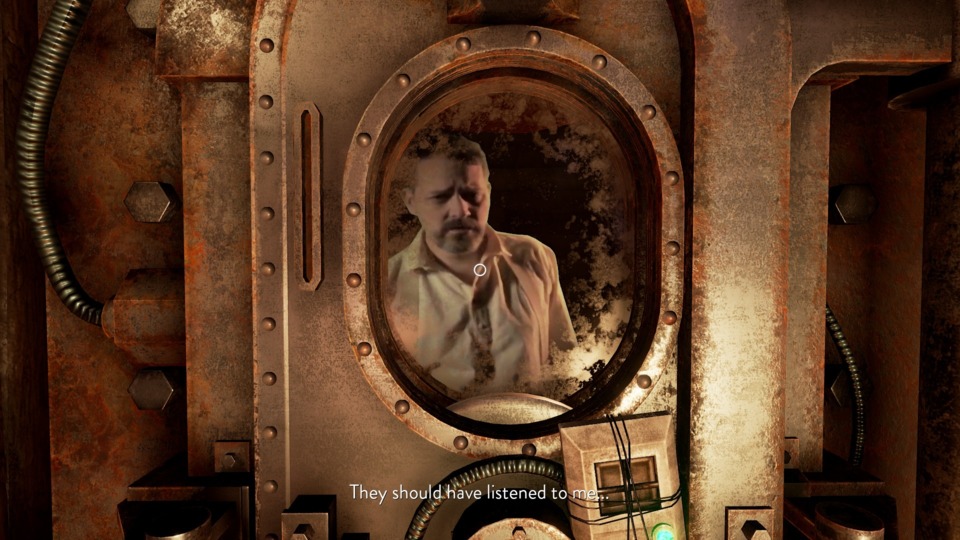Indie Game of the Week 317: Obduction
By Mento 0 Comments

Myst was an early PC gaming phenomenon I'll admit I completely missed out on; my priorities lied elsewhere in the mid-90s, being only yay high to a desktop tower back then. That first-person, mostly directionless format has certainly stood the test of time, seeing multiple remasters and imitations in the decades that followed, yet something about the leisurely pace, the hands-off approach to the narrative thrust, and the vast amount of dry reading involved never really piqued my interest as a youth. Now that I'm an old and busted washout many of those traits have become more endearing to me, and I've certainly enjoyed recent games that came from the same walk(ing simulator) of life like Firewatch and Gone Home, so I figured I'd give Obduction a try. More than just being a Myst disciple, Obduction came to us courtesy of Cyan Worlds, the original creators of the Myst franchise and its sequels Riven and Uru and was pitched to prospective Kickstarter backers as a spiritual sequel to Myst or even a modern incarnation of the Myst philosophy. Obduction sees an unnamed protagonist deposited on an alien world after encountering a strange floating seed while at a campsite. Upon reaching this world, which the earliest transplants named Hunrath, the player soon realizes that—though traces of civilization exists, including holographic recordings of its citizens—the place is almost entirely deserted but for one strange man named C.W. holed up in a bunker muttering to himself. C.W. gives the protagonist some vague goals to be getting on with, including restoring power to the local buildings, while leaving them to figure out the particulars of this alien world and the wheres and whys behind the disappearance of Hunrath's other denizens.
As I stated before, I'm not someone too familiar with Myst in any great detail (I did play it for like an hour, but beyond futzing around a lighthouse for a while I don't recall anything) but I've learned plenty over the years through general cultural osmosis. Myst's puzzles tended to revolve around elaborate, Goldbergian mechanisms that the player had to intuit how to use either from informative notes or from trial and error, and a heavily epistolary approach to narrative where scraps of correspondence and hastily written instructions were all the context you were given to understand the game's story and background. That's mostly true for Obduction at least, which I've come to understand is very much trying to be another Myst partly for the sake of the many hundreds of backers looking for a faithful successor. My progress so far has been... fitful at best, wandering a large location filled with pockets of human civilization dumped unceremoniously on an alien world inside a bubble that protects its inhabitants from a purple-hued and almost certainly inhospitable landscape just beyond. Hunrath's environs are all linked to a big tree in the center, which you soon learn is the source of the strange seeds that brought you and everyone else here, and that through the tree it's possible to visit at least three other alien worlds each with their own sapient species occasionally falling victim to this same strange abduction phenomenon.

The game seems very much set on giving you as little direction as possible and leaving you to piece together the fine details, with C.W.'s commands merely serving as starting points. I don't think he was completely clear about how I would restart the power, but I eventually figured it out by creating a passageway through a dam of sorts after re-establishing the flow of water through the town, following the trail behind to a junkyard and train station, and filling a train engine with fuel and switching it on to power up many of the other buildings in the vicinity. After that, I was told to remove a laser that was "freezing" the shield: after doing so, I found that when the shield isn't being interfered with it'll actually warp you from one side of the dome to the other if you attempt to pass through, which opened up a few more locations. Many places are locked with numberpads I'm going to need the right codes to breach and I've been scouring all the places I've been for notes and other hints as to what those passcodes might be. Locations like an underground speakeasy or a trapped submarine don't appear to have anything to offer, though I imagine it's more a case of when rather than if, and likewise I've been taking notes of anything that looks like it might be important for later even if I lack the context to understand their purpose in the present.
Mechanically the game's pretty straightforward with its controls and UI though the same can't be said about what you can and cannot interact with. A setting in the menu, off by default, will cause interactive objects to shine including otherwise hard-to-see buttons and pieces of paper that might otherwise blend into the surroundings. There's also the option to play the game in a free-roaming style (on by default) or a more traditional point-and-click style where movement is automated between hotspot zones. I sort of wonder if switching to the latter might make things easier as it may cut out a lot of geography that has no bearing on any of the puzzles. The game has a feature that I also appreciated in the low-budget Forever Lost trilogy: a camera and photo album that lets you record visual clues that might prove useful at a later time so as to avoid a lot of walking back and forth or having the players at home looking for some external means to keep track of this information, many of which include images as well as text. My current goal is to find a way underground to the roots of Hunrath's tree, but I've no idea where to start looking: I've opened up a few tunnels using the same laser tech for re-establishing the dome's shield's teleporting effect but none of them have led anywhere useful, nor has using said teleporting effect to get across the world.

Puzzle roadblocks like this are as natural to the adventure genre as regenerating health in a shooter or double-jumps to an explormer, but it's still discouraging to hit a wall so soon after starting and have almost no idea what the hell I'm doing. Obduction also feels old-school in ways that aren't always positive, such as handwritten notes lacking a plain text option (this might be more due to Obduction being from 2016, when accessibility options weren't quite as prevalent) for those having trouble reading the stylized cursive, and the aforementioned lack of concrete goals or a strong sense of where to head next or a more convenient way to keep notes and important clues gathered in one place. In other ways the game can feel very new too: it's absolutely gorgeous to look at even some seven years later, hence why it's joined this current wave of IGotW games I've been waiting to play until I had a better system, there's some fun little bits of FMV acting weirdness with the NPCs (both physical and hologrammatic), and occasionally its format seems as inspired by modern Indie first-person adventure games as much as it does its relatively ancient antecedents, suggesting the developers have been keeping tabs on this sub-genre since their early efforts to help establish it. If I'm completely lost it's probably because that's par for the course, and I'm meant to be inspired to crack this enigma by poring over every nook, cranny, and background detail in the vicinity for some kind of breakthrough-inducing clue. I've already found a bizarre rock that teleported me to a small area of a jungle planet, suggesting the dusty Arizona-esque Hunrath might only be the first chapter of the game, and the central mystery of these vanished people, the other alien races, and the ultimate purpose of this intergalactic tree and seed abduction system is a compelling enough sci-fi narrative hook. I'm not sure I'll have the patience to keep poking around this barren environment for a means forward for too much longer, but I can admire the level of thought and craft that went into this heady adventure. I suspect that, even though we're coming up on thirty years since Myst's debut, I still harbor some of my childhood doubts about whether I'll ever truly "get" these games.
Rating: 3 out of 5. (So far.)
| < Back to 316: Mages of Mystralia | 001-100 | 101-200 | 201-300 | > Forward to 318: Severed Steel |
